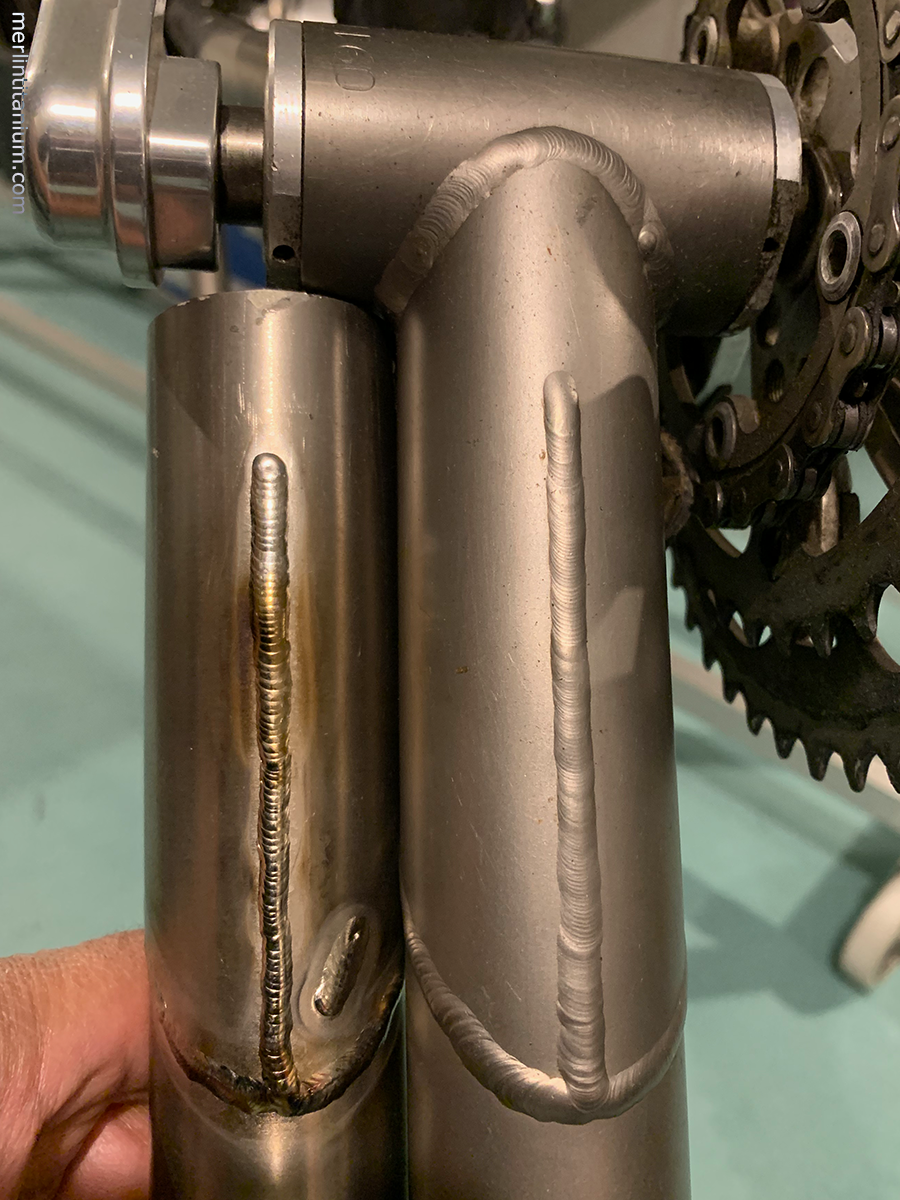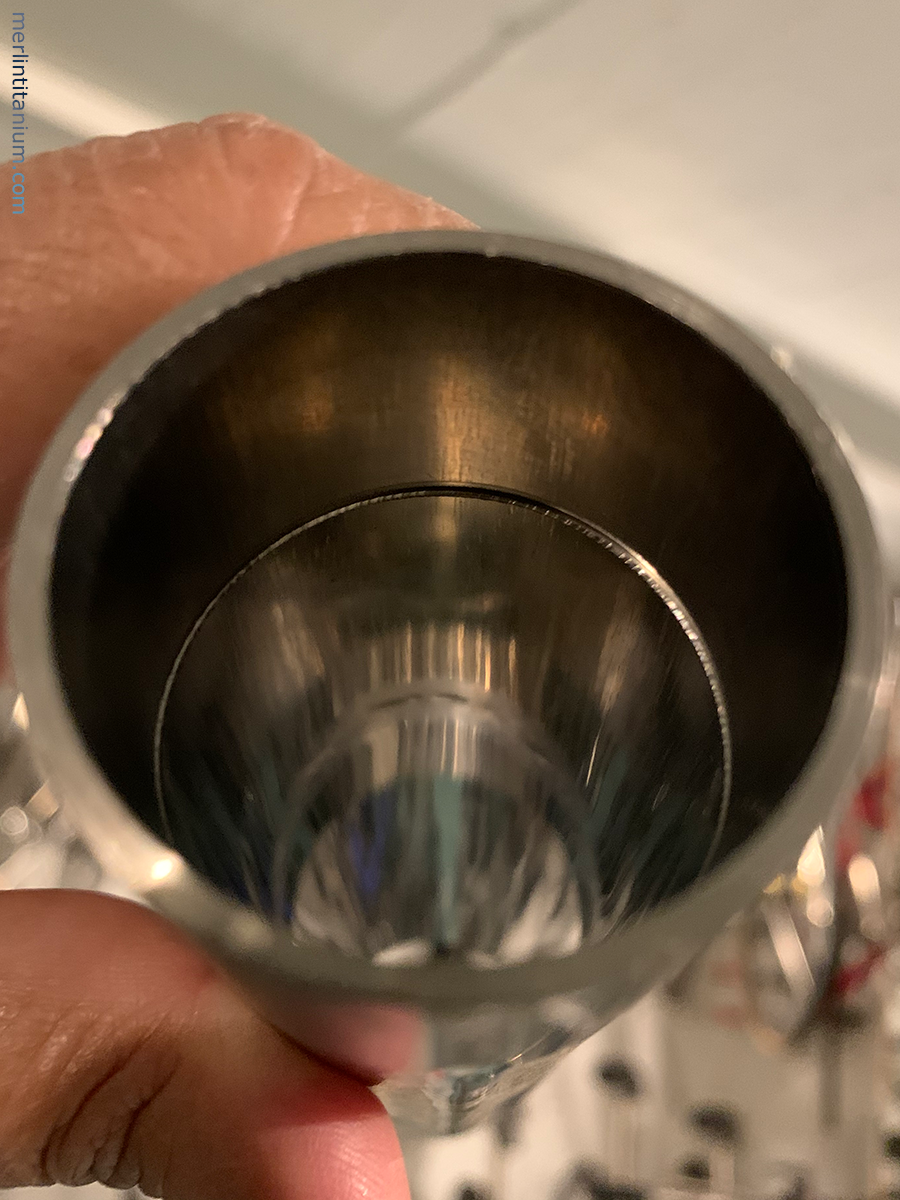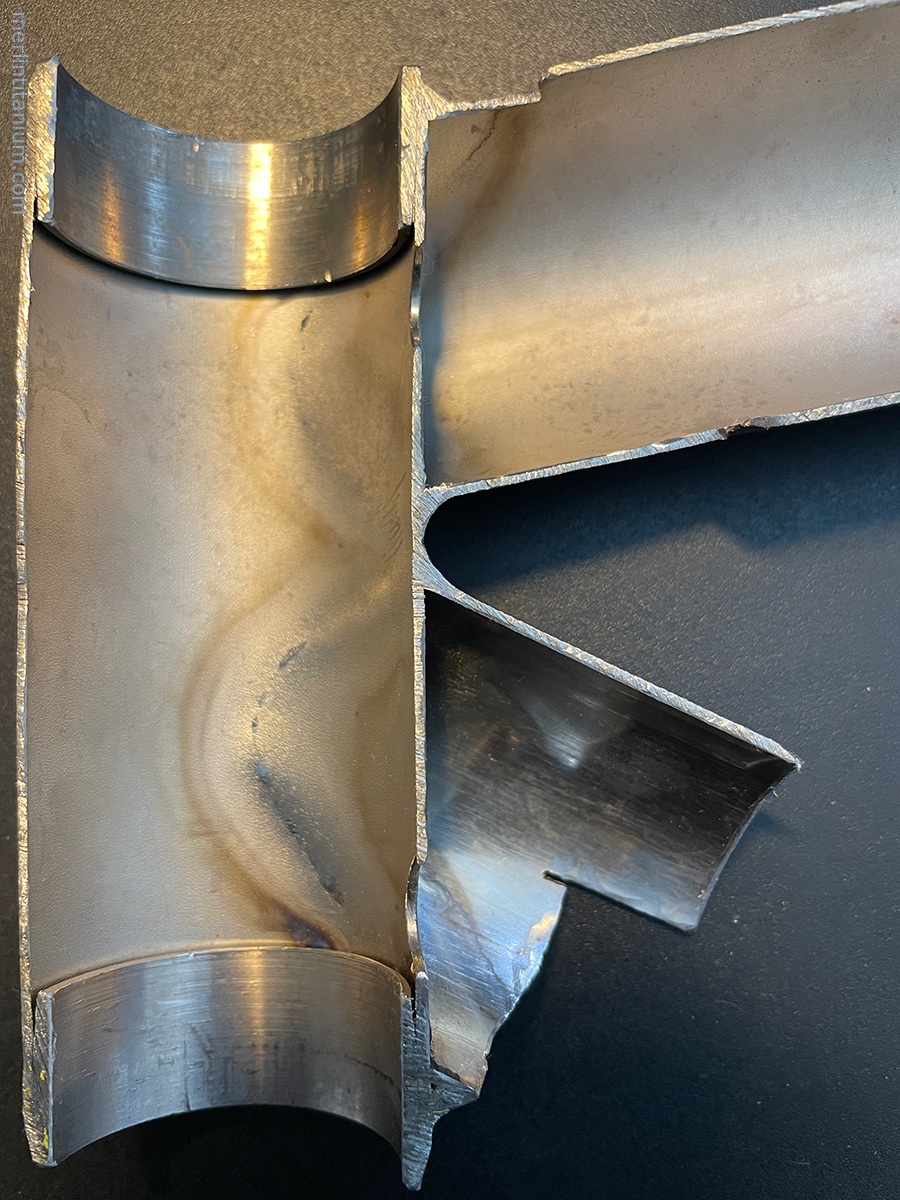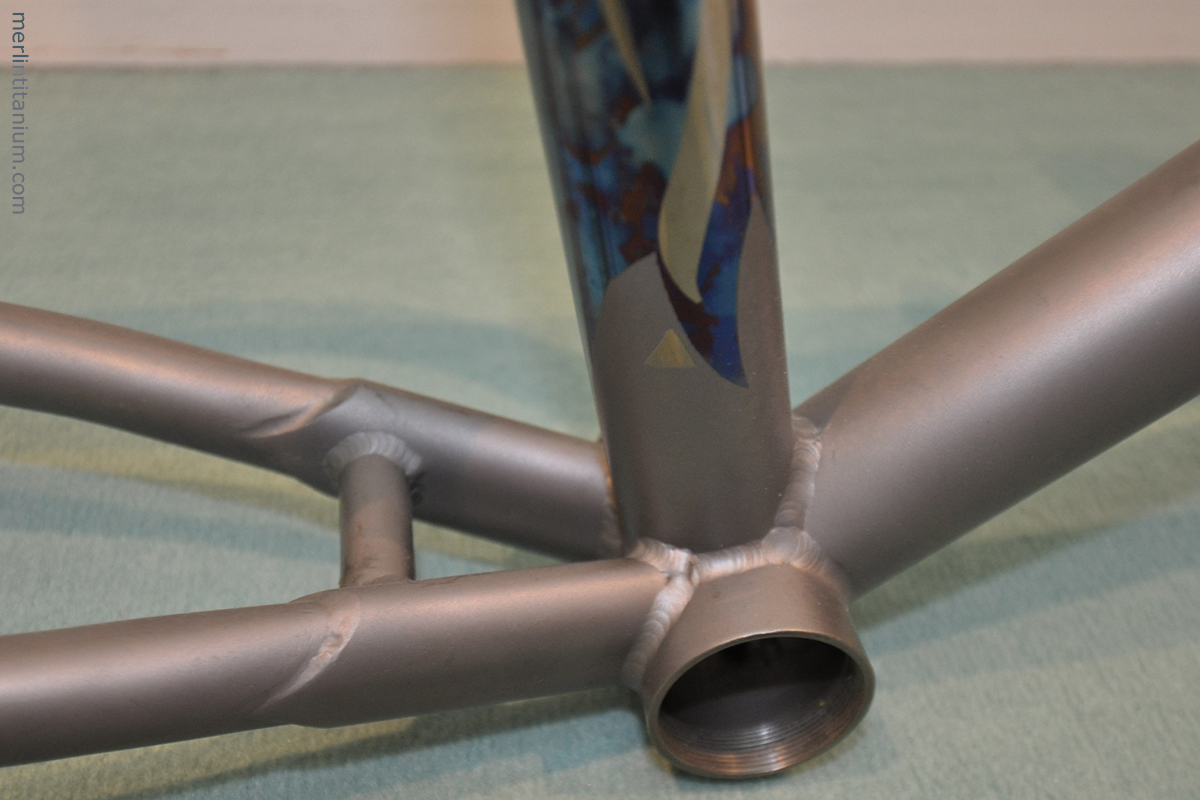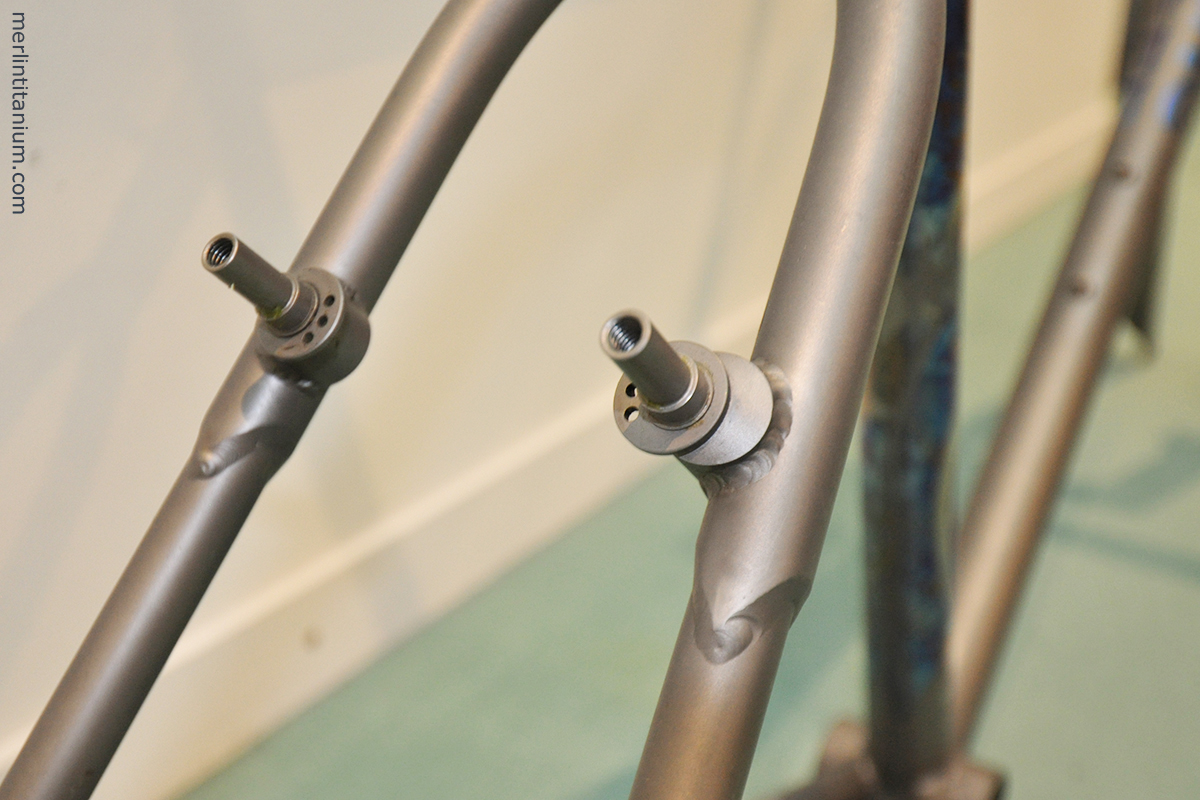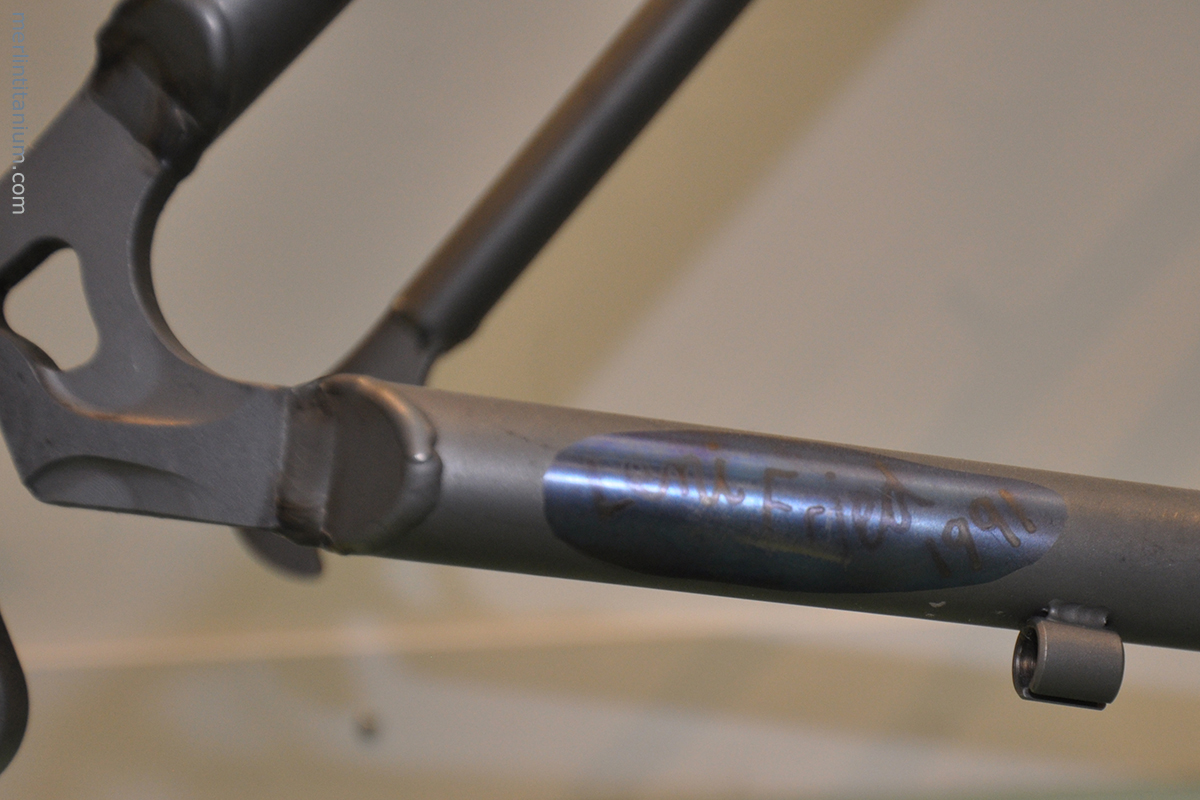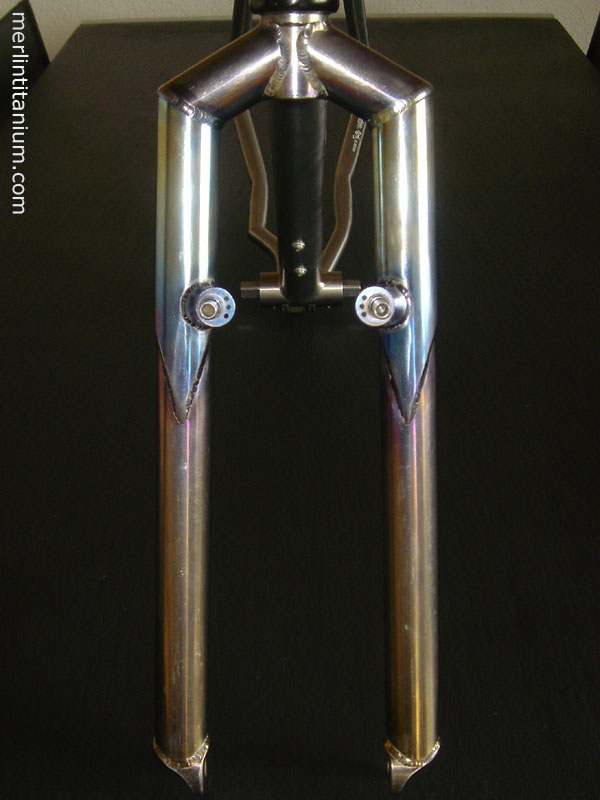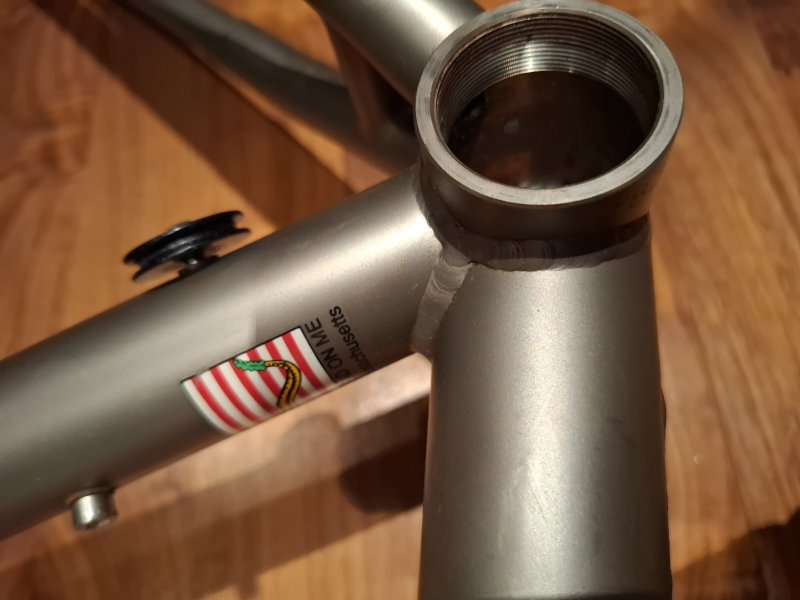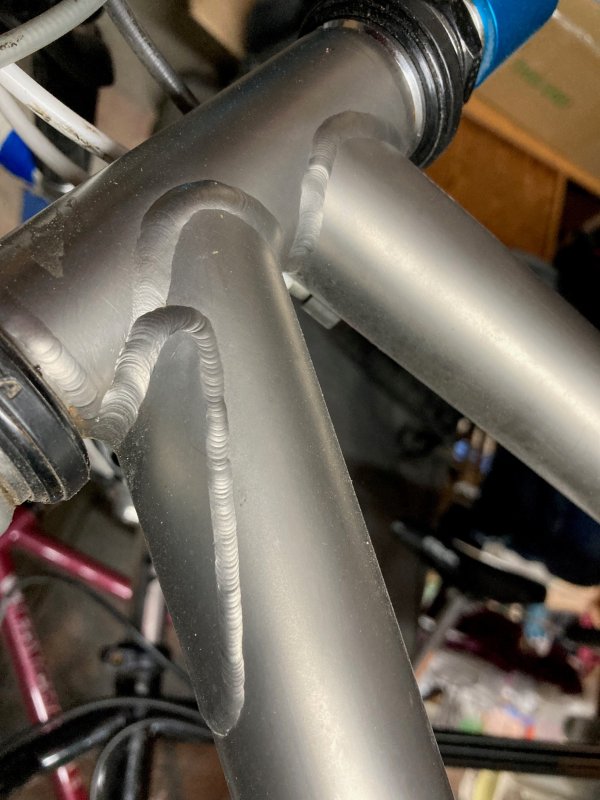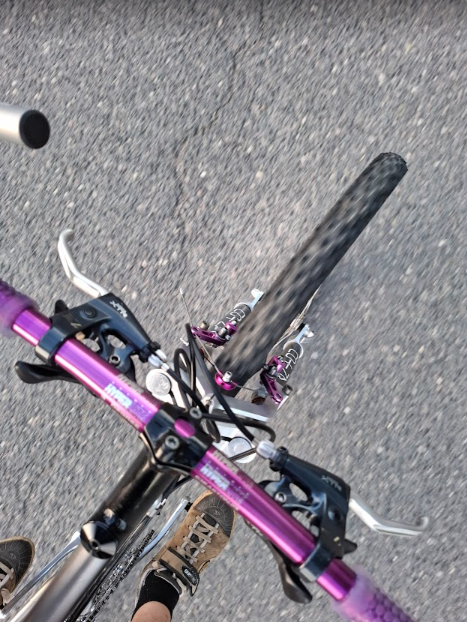henrysthreeironbands
New member
Hi, I'm wondering if anyone would know, possibly needs info straight from the welders.
My 93 Ti externally welded butted frame, has an extra (machined?) outer butting about 1 cm from the BB shell on the bottom tube.
My question is, was this particular butting intended to surround the bottom tube completely? Or was it intended to go in a certain direction, e.g. right (driveside) or left, or straight (top or bottom). Or was it intended to be centerred (equal amount of butting all around?)
Am maybe shooting in the wild, but finally got to taking my second hand one apart to rebuild, and the engineering part of me just got extremely curious how it was designed and intended, seeing / feeling this butting.
Thanks.
My 93 Ti externally welded butted frame, has an extra (machined?) outer butting about 1 cm from the BB shell on the bottom tube.
My question is, was this particular butting intended to surround the bottom tube completely? Or was it intended to go in a certain direction, e.g. right (driveside) or left, or straight (top or bottom). Or was it intended to be centerred (equal amount of butting all around?)
Am maybe shooting in the wild, but finally got to taking my second hand one apart to rebuild, and the engineering part of me just got extremely curious how it was designed and intended, seeing / feeling this butting.
Thanks.
Last edited:

